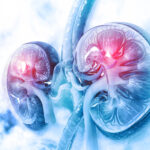Scientists at the University of Dundee have uncovered the internal mechanism of a molecular switch that safeguards the brain against Parkinson’s disease. The research offers potential avenues for developing drugs to benefit patients with this rapidly growing brain disorder, for which there are currently no effective treatments to slow or halt progression.
Previous studies at the University identified PINK1, a gene crucial for protecting brain cells from stress. Mutations in PINK1 eliminate this protective effect, leading to the deterioration of movement-controlling cells and the onset of Parkinson’s symptoms.
PINK1 codes for a type of enzyme called a kinase. This enzyme detects damage to cell mitochondria, the powerhouses of cells. PINK1 then initiates a protective pathway by interacting with two essential proteins, ubiquitin and Parkin, to remove damaged components. However, the activation mechanism of PINK1 was previously unknown.
In a study published in Science Advances, researchers from Dundee, along with collaborators from the UK, Netherlands, and Germany, employed biological and artificial intelligence methods to uncover how the PINK1 enzyme is activated. They developed a model illustrating that PINK1 activation occurs through binding to specific regions of the Translocase of outer membrane (TOM) complex, a complex machine on the surface of mitochondria.
The findings highlight that PINK1 utilises unique elements not found in other enzymes, forming a relay switch that activates PINK1 to enable it to target ubiquitin and Parkin, thereby exerting its protective function against Parkinson’s disease.
Professor Miratul Muqit, Consultant Neurologist at the Medical Research Council Protein Phosphorylation and Ubiquitylation Unit (MRC-PPU) in the School of Life Sciences at Dundee, expressed the clinical implications: “As a clinician treating Parkinson’s patients, our research aims to uncover fundamental mechanisms that could lead to new therapeutic approaches in the future.”
Muqit continued, “Our findings contribute to the growing strategies targeting the PINK1 pathway, some of which are entering clinical trials for Parkinson’s patients this year. This study provides a foundation for future research aimed at identifying drug-like molecules that can target PINK1 at the TOM complex.”
Professor Dario Alessi, Director of the MRC-PPU, added, “This research represents bold and meticulous molecular research that enhances our understanding of Parkinson’s disease biology. It also offers new insights into the diagnosis and treatment of PINK1-regulated Parkinson’s disease, paving the way for further crucial investigations.”
More information: Olawale G. Raimi et al, Mechanism of human PINK1 activation at the TOM complex in a reconstituted system, Science Advances. DOI: 10.1126/sciadv.adn7191
Journal information: Science Advances Provided by University of Dundee








